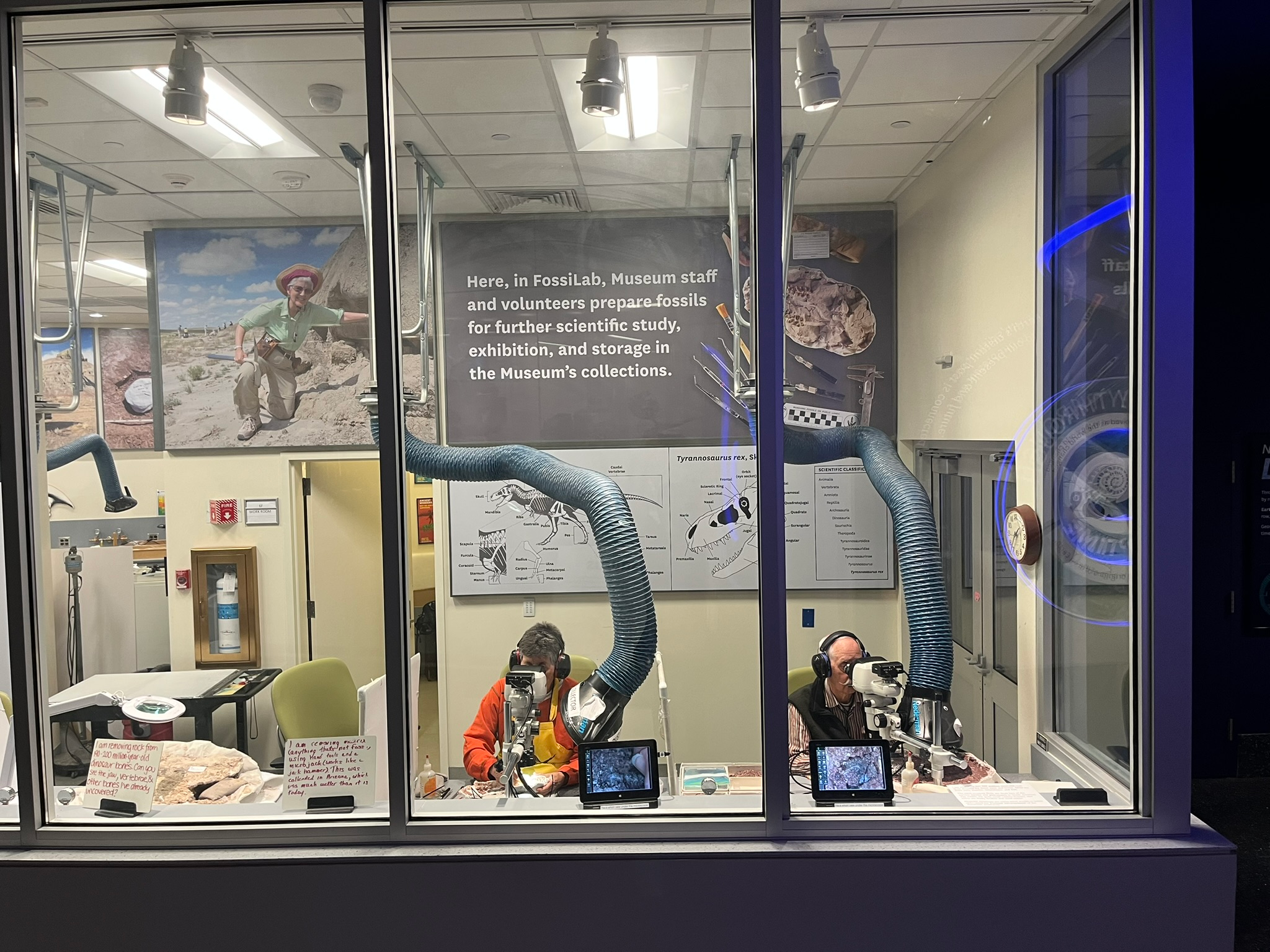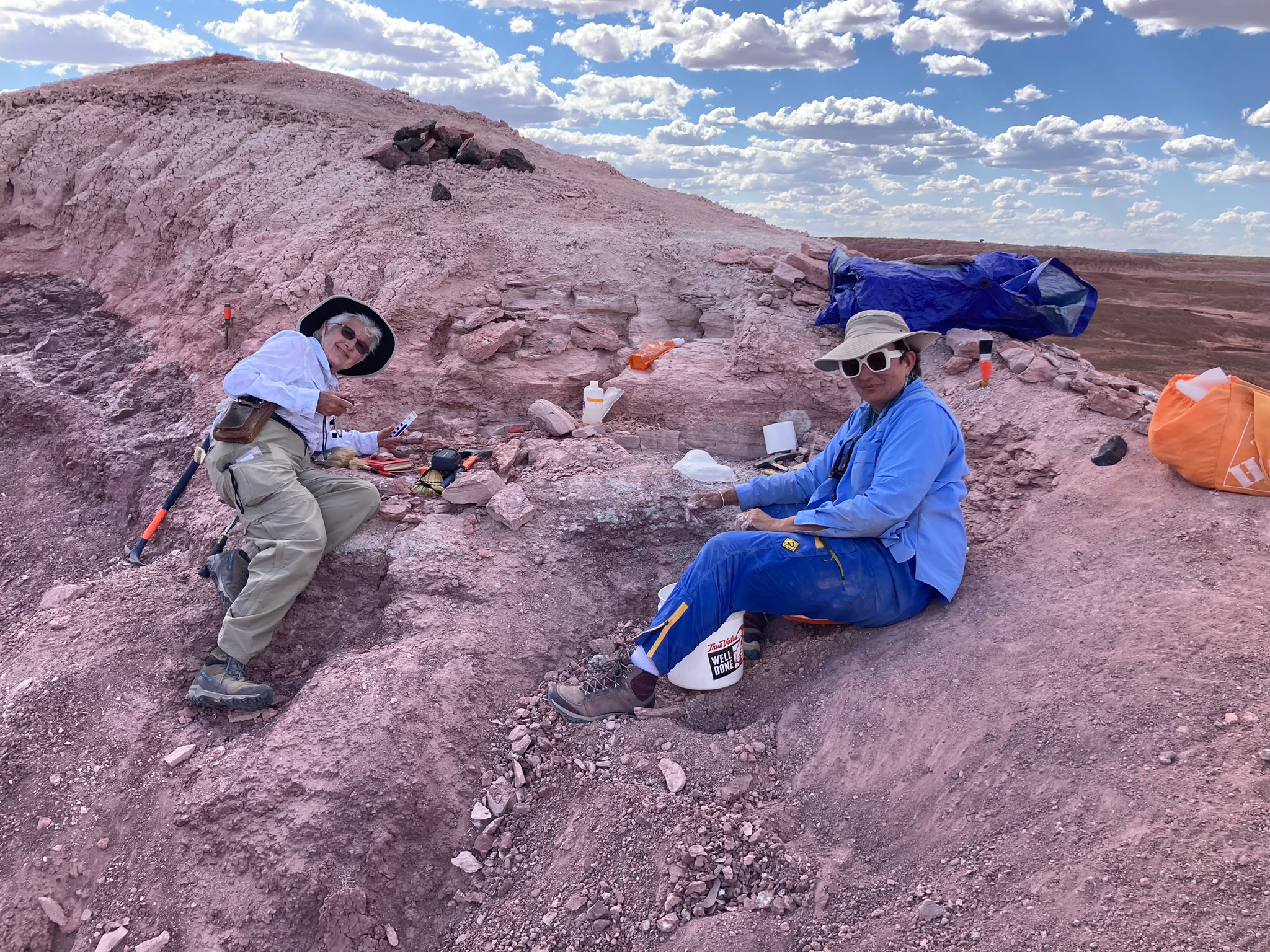A single deposit has produced a wealth of fossils revealing the late Triassic ecosystem, where giant amphibians cohabited with newcomers, including turtles and pterosaurs. The 12 million years leading up to the end-Triassic extinction have been relatively poorly represented in the fossil record, making this find particularly precious.
Almost 209 million years ago, Arizona was getting a foretaste of its modern dryness, but still hosted rich ecosystems around temporary riverbeds. A bonebed in what is now the Petrified Forest National Park (PEFO) reveals far more than trees were turned to stone 15 million years before. An outcrop at Owl Rock contains volcanic ash that has allowed geologists to date its age within 100,000 years.
The Owl Rock Member, as the deposit is known, is 130 meters (420 feet) thick. Dr Ben Kligman of the Smithsonian National Museum of Natural History co-led a team looking for the ancestors of mammals towards the bottom, and while they didn’t find them, they got plenty of other animals instead in an assemblage known as PFV 393. “That’s the fun thing about paleontology: you go looking for one thing, and then you find something else that’s incredible that you weren’t expecting,” Kligman said in a statement.
So many small fossils were encased in these rocks that the team opted not to try to extract them individually in the harsh conditions. Instead, the palaeontologists cut large chunks of PFV 393 from the site, protected them with plaster and shipped them back to the lab. For years, visitors to the Smithsonian could watch volunteers delicately removing the rocks from around the bones.

Volunteers Richard Cline and Lynn Sharp extracting fossils from the Owl Rock member under the eyes of Smithsonian visitors
Image credit: Ben Kligman, Smithsonian
These samples have revealed more than 1,200 bones, teeth, scales, and fossilized dung (coprolites) from 16 vertebrate groups.
The discovery shows an ecosystem in transition, although the significance would not have become clear to an observer for more than 7 million years.
Many of the larger animals found there were old, with crocodile-like creatures and giant amphibians that had dominated the land for much of the Triassic, and freshwater sharks and coelacanths in the waters.
However, there are also early examples of some creatures that would benefit when enormous eruptions launched a mass extinction that ended the Triassic. As is usually the case, these new arrivals started out small. The pterosaur would have been far from petrifying to a time-traveling visitor to PEFO, being just the size of a seagull. Two-meter (6-foot) long amphibians would have been much more alarming, but the significance lies in being the oldest American example we have of a clade of flying reptiles whose largest members would reach 2.5-meter (8-foot) wingspans millions of years later.
Older pterosaurs have been found in Europe, but PFV 393’s version is still a precious find. “What was exciting about uncovering this specimen was that the teeth were still in the bone, so I knew the animal would be much easier to identify,” said Suzanne McIntire, who volunteered with the Smithsonian for 18 years before making the discovery.
The species has been named Eotephradactylus mcintireae in recognition of McIntire’s efforts. Wear on the teeth indicates that its diet was composed of armored fish. The genus name means “ash-winged goddess of dawn” in Greek, although the fish probably disagreed.

Today, it is hard to imagine this landscape supporting such an abundance of species, many water-dwelling, but Smithsonian’s Kay Behrensmeyer and Professor Robin Whatley of Columbia College Chicago have helped reveal a different time.
Image credit: Ben Kligman, Smithsonian
Pterosaurs had a good run, but turtles proved to be an even more enduring line originating in the late Triassic. The one found at Owl Rock came equipped with spikes in addition to its shell, presumably because sometimes attack is the best form of defense. The specimen is 1-6 million years younger than the oldest known turtle, which was found in Germany.
“This suggests that turtles rapidly dispersed across Pangaea, which is surprising for an animal that is not very large and is likely walking at a slow pace,” said Kligman, apparently having forgotten Aesop’s fable.
Arizona was close to the equator when PFV 393 was laid down, and far inland as part of Pangea, the giant supercontinent. That must have made for roasting hot summers, but although the location where the bed was laid down was semi-arid and drying out, it was crossed by many small river channels. The authors compare the conditions to those in the temporary riverbeds that are currently flooding Australia’s Kati Thanda-Lake Eyre. The presence of frogs in such an environment is particularly intriguing.
Layers of sediment and volcanic ash testify to the frequency of these floods, although the authors think the bones, teeth, and scales found in this project were deposited over tens to thousands of years.
The site is the closest late-Triassic terrestrial fossil assemblage to the equator.
The study is published in the Proceedings of the National Academy of Sciences.
Source Link: North America’s Oldest Pterosaur And Turtle Fossils Found In Arizona’s Petrified Forest